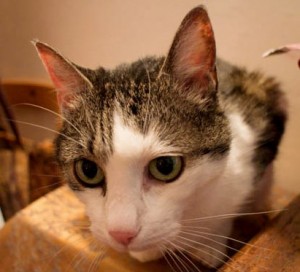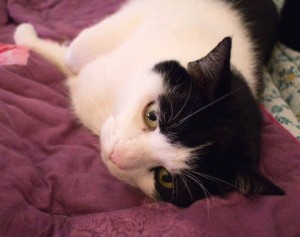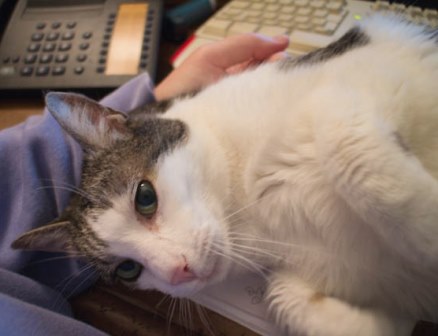 First, what is the Vasari Corridor?
First, what is the Vasari Corridor?
In a nutshell, it’s an elevated, enclosed passageway connecting two important Florentine palaces: the Palazzo Vecchio and the Palazzo Pitti. It runs over the Ponte Vecchio, which is the most spectacular part. It’s about a half a mile, or one kilometer, long.
If you look at my first photo, on the left (on the top left, you can see a reflection in the window, which is kinda cool), you can see the Corridor…Look about halfway down on the right…the Corridor, with two small windows, sits on top of the arch jutting out from the building (the Uffizi Gallery).  See how it continues over the Ponte Vecchio in the distance (same sort of windows)? In the second photo, you have a closer view of the Corridor, located just above the shops jutting out from the bridge and the arches (see the white-ish part). (You can make most of the photos bigger by clicking on them.)
See how it continues over the Ponte Vecchio in the distance (same sort of windows)? In the second photo, you have a closer view of the Corridor, located just above the shops jutting out from the bridge and the arches (see the white-ish part). (You can make most of the photos bigger by clicking on them.)
A bit of history: the Corridoio Vasariano, as it’s called in Italian, was commissioned in the year 1565 by the Grand Duke Cosimo I de’Medici, on a design by Giorgio Vasari, hence its name. Its main purpose, back then, was to enable the Medici family and their guests to move freely between the two (above-mentioned) palaces, probably via a small carriage…It was also a fast and safe escape route in case of any trouble…
Interesting tidbit: I read that before the Corridor was built over the Ponte Vecchio (= the Old Bridge), the bridge housed a series of butcher shops, which used to dump their smelly waste (ugh) right into the river. Since that wouldn’t have provided a very palatable view for the Medici family, however, all these shops were kicked off the bridge after the Corridor was built and were replaced by jewelry shops, which are still there today…The third photo offers a view of the bridge and its shops…
The Vasari Corridor holds the Uffizi Gallery’s famous collection of self-portraits (from Andrea del Sarto to Chagall), which we were not allowed to photograph.  We were, however, allowed to take photos of the views from the many panoramic windows, which offer great views of the river, as you can see. Indeed, these views are really the best feature of the Corridor, in my opinion…in addition to the neat fact that you are walking “over” the heads of the people in the streets below, just like the Medici family did several centuries ago… 🙂
We were, however, allowed to take photos of the views from the many panoramic windows, which offer great views of the river, as you can see. Indeed, these views are really the best feature of the Corridor, in my opinion…in addition to the neat fact that you are walking “over” the heads of the people in the streets below, just like the Medici family did several centuries ago… 🙂
Unfortunately, as you can tell, the day selected for our tour of the Vasari Corridor turned out to be a rather stormy one, which means that my photos didn’t come out as they would have on a lovely sunny afternoon. Oh well. Can’t have everything! 🙂 
By the way, Stefano had never been to the Vasari Corridor before (imagine that!), and I’d been there only twice, many many years ago…so I’d been trying for a while to get access in some way…Not as easy as you’d think, since it’s closed to the general public most of the year, and to get inside you have reserve a private, guided tour, paying an arm and a leg…But we finally got lucky and were able to view the Vasari Corridor yesterday without losing any…limbs or being rushed by anyone… 🙂
After our amble through the Corridor, which started and ended in the Uffizi Gallery, we had enough time left to check out some of our favorite paintings in the Uffizi, such as Botticelli’s “Birth of Venus,” Botticelli’s “Allegory of Spring,” and Leonardo da Vinci’s “Annunciation.” Overwhelming…so beautiful…If you come to Florence, you shouldn’t miss going to the fabulous Uffizi Gallery…
Even though you can find photos of the Uffizi paintings online, photography is strictly forbidden inside the museum…so, again, we didn’t take any photos of the artwork, Just of the stunning outside views (see my early evening shot of the Palazzo Vecchio, all lit up, taken from the terrace of the Uffizi’s café, for example…)…
Anyway, ’twas a lovely afternoon…apart from the terrible weather, of course! 🙂














